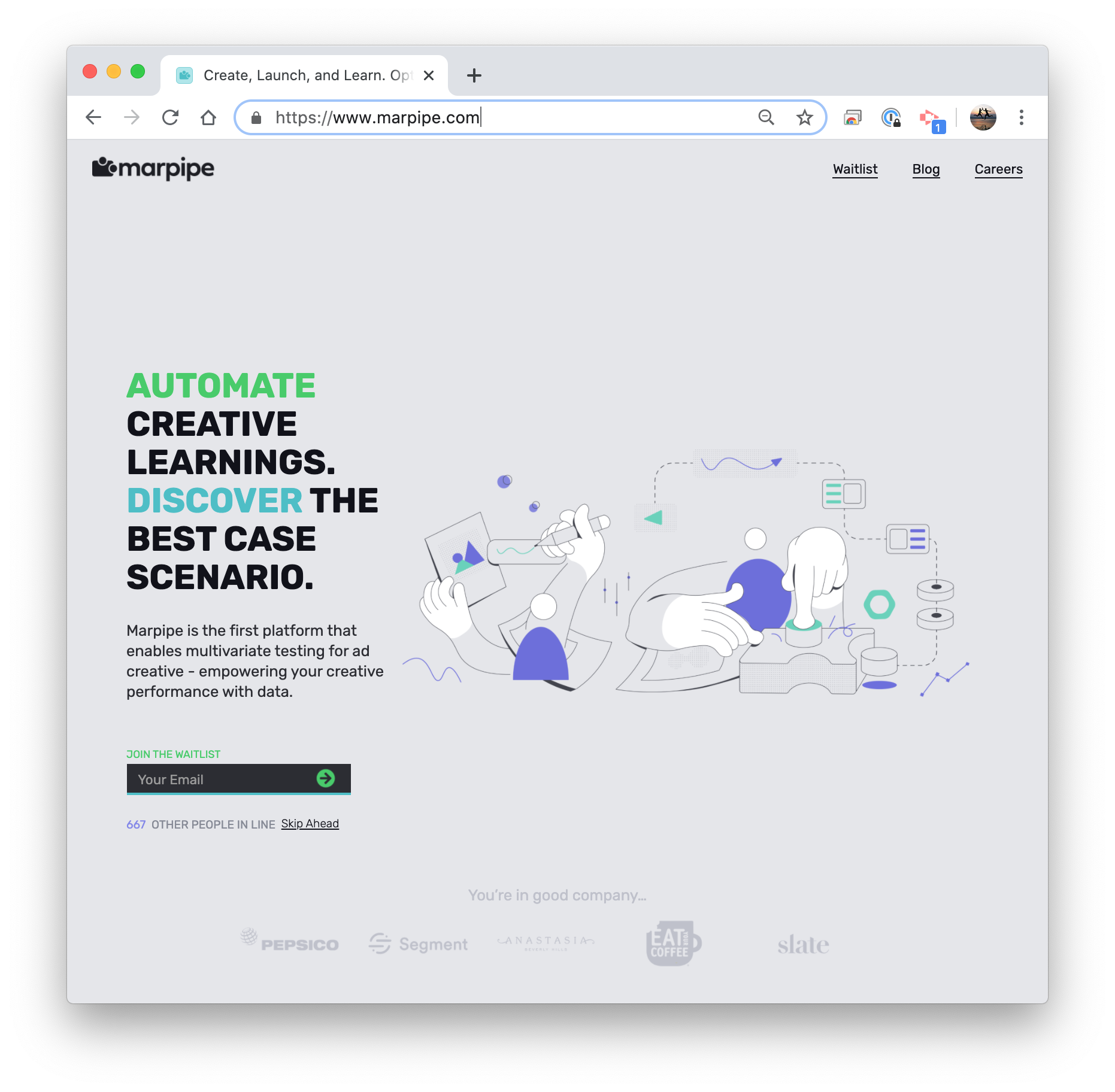
Dan Pantelo was running a marketing agency when he realised clients had huge teams of creatives manually designing countless variations of their adverts for split testing. He figured there must be a better way.
Over the past two years the Marpipe team have developed a digital platform which automates the process of creating, sharing online, and analysing results from hundreds of different versions of each advertisement. Although not yet launched, in just two months they’ve signed up over 500 beta users.
I spoke to their Director of Marketing, Brett Friedman. I learned enough to write many more than the below lessons, but I’ve tried to pick my top five:
1. Use HARO (Help a Reporter Out) to source original content – HARO is Marpipe’s largest source of traffic, and probably something every founder should be leveraging. It’s a mailing list of 800k journalists, bloggers, and founders. Brett uses it as a source of blog content. He submits questions on creative marketing and receives responses from founders, which he compiles into articles. He then backlinks and tags all the founders, who often share it with their communities. All articles have a Marpipe lead magnet.
2. Automated content with Feedly + Snip.ly + Buffer – Brett is continually posting relevant content on up to 30 online communities, all of it branded and linked back to Marpipe’s site. How? He uses Feedly to automatically pull content from thousands of sources, filtered by its A.I. bot Leo. Once a week he picks out the best articles, and puts them in Snip.ly which adds Marpipe’s logo and CTA to the article. Then he schedules posts in Buffer for the rest of the week.
3. Post and host – Marpipe regularly posts content on Medium, which Brett says is good for evergreen content. They also post on Business2Community, a high domain authority blog which brings large spikes of traffic quickly. In addition they allow guest authors on their blog, which cross-pollinates their followings (I think I just invented that phrase).
4. Create a compelling content funnel – In addition to the above(!), they write at least one blog post a week. They then choose the best performers and run paid ads on FB and Instagram to get inexpensive traffic. Each article has a lead magnet inviting the reader to trade their email for more great content, and then join their waitlist, and then their referral program.
5. Run experiments but involve your subjects – Marpipe ran a series of ads with the copy “this is not an ad, it’s an experiment”, inviting people to like their favourite ad and click to see results. This took them to a microsite which shared all the behind-the-scenes data. This drove significant traffic to their main site. Brett said: “To an extent everyone dislikes the idea of advertising. Show you’re self-aware and people will respond”.
Follow Brett on Twitter
Marpipe website



